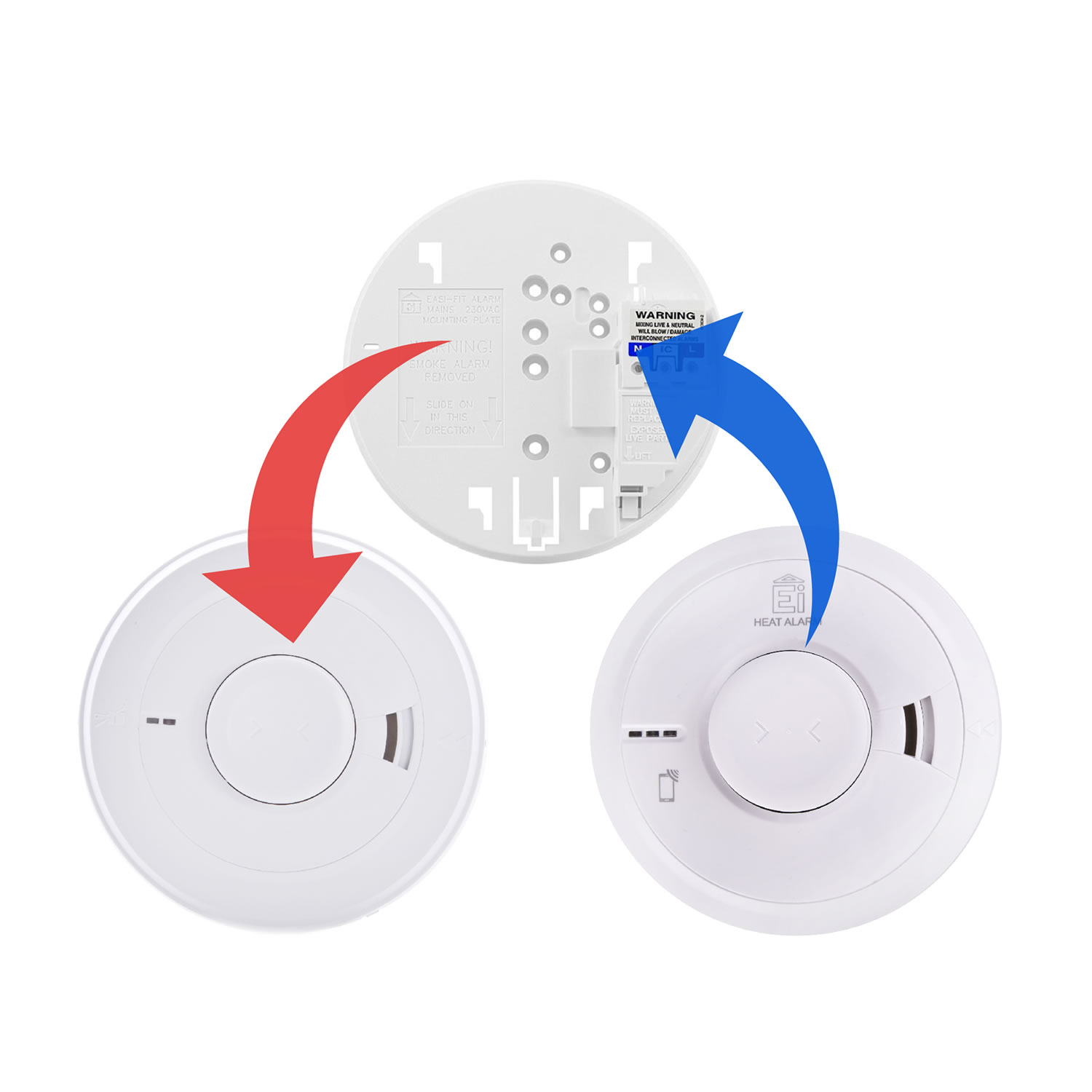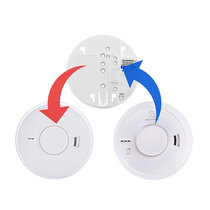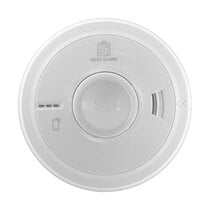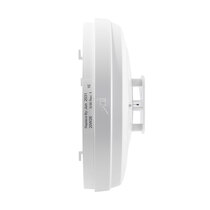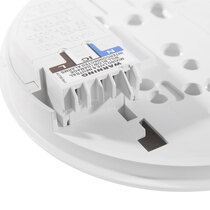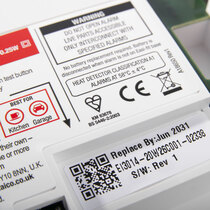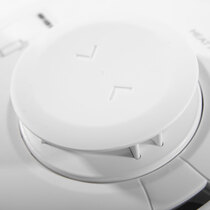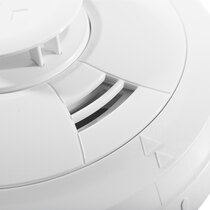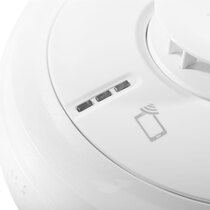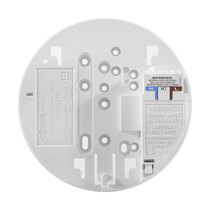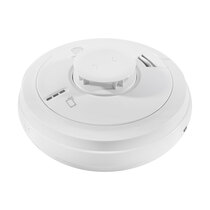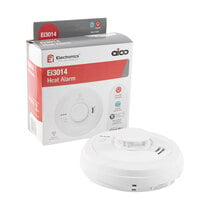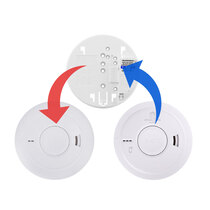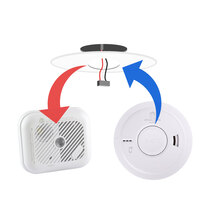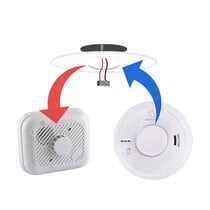-
Contact
Sales & Customer Service
0800 612 6537 support@safelincs.co.uk Live ChatDelivery Enquiries
0800 077 6149 - Resources
Fire & Safety Solutions
CALL OUR TEAM NOW 0800 612 6537
Lines open today 8am - 6pm
Quick Delivery
From £3.19 inc VAT
Secure Payments
with our fast checkout
Live Customer Chat
Available Now
30 Day Accounts
for Public Sector
5 Star Customer Feedback
Replacement for Ei164, Ei164RC and Ei164e Mains Powered Heat Alarms
Product Overview
Interlink
Technical Data
FAQs (2)

The Ei164, Ei164RC and Ei164e were mains powered heat alarms with a lithium battery backup. Since all Ei160 series alarms have been discontinued, original manufacturer Ei Electronics (also known as Aico in the UK) has designed their new Ei3000 range of alarms to be fully backward compatible with the Ei160 series that it replaces, including the Ei164 heat alarm.
The new Ei3014 heat alarm is the perfect, recommended replacement for the Ei164. The new alarm can hard-wire interlink with any remaining Ei160 series alarms in your system, and fits directly onto your existing Ei160 base without any need to rewire. The heat sensor technology in the Ei3014 is designed for places where dust, humidity, and normal household fumes may trigger smoke alarms, such as kitchens, lofts, garages and workshops.
- Power: 230V mains powered with back-up battery
- Back-up Battery: Self-charging lifetime battery
- Warranty: 5 year warranty
- Suitable for garages, lofts, workshops and kitchens
- Replacements also available for the Ei161 and Ei166 mains powered smoke alarm
- AudioLINK technology allows users to extract real time data to their smart phone or tablet
- Heat sensing thermistor detects high temperatures and is immune to nuisance alarms from everyday fumes
- Fits onto your existing Ei164 alarm base (easi-fit base included to keep as a spare)
- Memory feature – easy to identify an alarm that has previously sounded
- CE and Kitemarked to BS 5446-2: 2003
- Performs its own self-checks every 48 seconds ensuring the alarm is functioning correctly
- Piercing 85dB warning alarm at 3 metres
- Large combined test and silence button
The simple installation process of the Ei3014 replacement alarm removes the need for an electrician. However, power to all alarm circuits should be cut before removing and replacing any mains powered alarm.
The tables below show all the products that can interlink with this alarm.
Smoke and Heat Alarms
|
Model Number
|
Type of Unit
|
Type of Interlink
|
| Ei3014 / Ei3014RF | Mains Powered Heat Alarm - Sealed Lithium | Hardwire Interlink |
| Ei3016 / Ei3016RF | Mains Powered Optical Smoke Alarm - Sealed Lithium | Hardwire Interlink |
| Ei3024 / Ei3024RF | Mains Powered Optical & Heat Alarm - Sealed Lithium | Hardwire Interlink |
| Ei3028 / Ei3028RF | Mains Powered Heat & Carbon Monoxide Alarm - Sealed Lithium | Hardwire Interlink |
| Ei2110e / Ei2110eRF | Mains Powered Multi Sensor Smoke & Heat Alarm - Sealed Lithium | Hardwire Interlink |
| Ei161e / Ei161eRF | Mains Powered Ionisation Smoke Alarm - Sealed Lithium | Hardwire Interlink |
| Ei164e / Ei164eRF | Mains Powered Heat Alarm - Sealed Lithium | Hardwire Interlink |
| Ei166e / Ei166eRF | Mains Powered Optical Smoke Alarm - Sealed Lithium | Hardwire Interlink |
| Ei141 / Ei168RC141RC | Mains Powered Ionisation Alarm - 9V Alkaline | Hardwire Interlink |
| Ei144 / Ei168RC144RC | Mains Powered Heat Alarm - 9V Alkaline | Hardwire Interlink |
| Ei146 / Ei168RC146RC | Mains Powered Optical Smoke Alarm - 9V Alkaline | Hardwire Interlink |
Carbon Monoxide Alarms
|
Model Number
|
Type of unit
|
Type of interlink
|
| Ei3018 / Ei3018RF | Mains Powered Carbon Monoxide Alarm - Sealed Lithium | Hardwire Interlink |
| Ei3028 / Ei3028RF | Mains Powered Heat & Carbon Monoxide Alarm - Sealed Lithium | Hardwire Interlink |
| Ei261 | Mains Powered Carbon Monoxide Alarm - Sealed Lithium | Hardwire Interlink |
Ancillary Products
|
Model Number
|
Type of unit
|
Type of interlink
|
| MCP401RC | Mains Powered Manual Call Point | Hardwire Interlink |
| Ei1529RC | Mains Powered Locate, Silence & Test Control Switch | Hardwire Interlink |
| Ei159 | Mains Powered Smoke Alarm Locator Switch | Hardware Interlink |
| Ei128R | Mains Powered 5A Relay Module | Hardwire Interlink |
| Ei128RBU | Mains Powered 5A Relay Module with Lithium Backup Battery | Hardwire Interlink |
| Y03 | Mains Powered Multi Frequency Sounder | Hardwire Interlink (via relay) |
| SAB300C | Mains Powered Flashing Xenon Strobe (Clear) | Hardwire Interlink (via relay) |
| SAB300R | Mains Powered Flashing Xenon Strobe (Red) | Hardwire Interlink (via relay) |
Wiring Explained
Mains powered Ei Electronics smoke and heat alarms require a 230V AC power supply and up to 12 alarms can be hardwire interlinked in one system.
To obtain a mains power supply, each alarm can be connected to the nearest lighting circuit using 2 core and earth cable with a separate, dedicated interlink cable connecting all alarms. However, if possible it is recommended that the alarms are all powered from a dedicated circuit from the distribution board using 3 core and earth cable for safety during maintenance, as the interlink cable will carry power from live alarms on other power circuits. Please see the diagram below:-
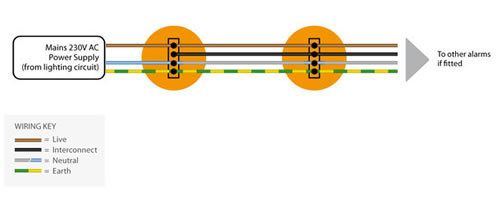
| Product Code | EI164RA |
|---|---|
| Alternative Product Codes | Ei3014, Ei164, Ei164RC, Ei164e, Ei164EK |
| Brand | EI Electronics |
| Back-Up Battery | Self-charging lithium battery |
| Dimensions (HxDia) | 66 x 150mm (including base) |
| Maximum Humidity | 15% to 95% |
| Operating Temperature | 0°C to 40°C |
| Sound Output | 85dB |
| Weight | 0.44kg |
| Product Datasheets |
Q. How can we test the alarm to make sure it is working?
A.
The manufacturer's recommendation is to test the alarm by pressing the test button. This will simulate a heat input at the heat sensor. You can also test it with a hair dryer but make sure that the hairdryer is kept away at a suitable distance from the alarm. Do not attempt to test the alarm by using open fire or excessive heat as this may damage the unit.
Q. What type of electrical cable is required to carry the mains supply and trigger signal for the wired alarms?
A.
For the mains supply of the first unit a 2-core earth cable would be sufficient. For the connection between the alarms a 3-core earth cable would be required
Key Product Features
What's Included?
Every EI Electronics EI164RA is supplied with the following components.
- 1 x Ei3014 heat alarm
- 1 x Sealed 10-year lithium back-up battery
- 1 x Spare easi-fit base plate
- 1 x Screw fixing set (screws & rawl plugs)
- 1 x Instruction manual

Pricing & Availability
| Model | Stock | Price |
|---|---|---|
| Product Code: EI164RA |
Stock Level:
More than 20 in stock Expected dispatch: Today
|
Price:
£52.31 inc VAT £43.59 ex VAT |
Approved Partner
Delivery Options
The following delivery options are available on this product.
Customer Reviews
31 customers have given this product an overall rating of 4.9 out of 5
Reviews by real customers
All of our product reviews are written by real customers that have purchased this product from us and are published without modification.Rating: 5 / 5 Stars
Reviewed by: A I
Published on: 19th April 2024
Rating: 5 / 5 Stars
Reviewed by: S H
Direct replacement, simply click to existing back plate . So easy
Published on: 29th March 2024
Rating: 5 / 5 Stars
Reviewed by: s f
works perfectly
Published on: 17th March 2024
Looking for more information?
If you have any questions or would like more information about this product you can ask one of our specialists.
Live Chat Available Now
Direct Telephone
01507 464181




























